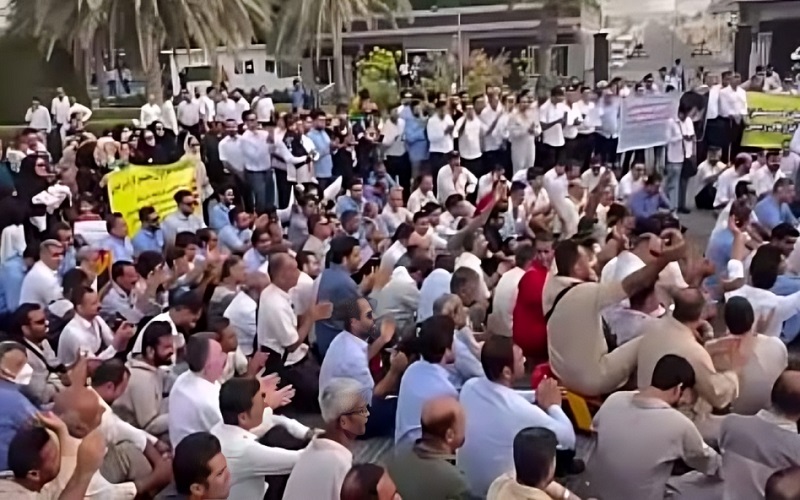Simultaneously with fluctuations in foreign exchange and gold prices in Iran and turbulence in financial markets, economic protests were also carried out by trade groups in various cities on Tuesday.According to reports published on social media on Tuesday, February 11, workers in the oil and gas industries in Bushehr, steel industry workers in Gilan, and housing investors who suffered financial losses in Qazvin held protest gatherings.Workers of the Fajr Jam Gas Refinery in Kangan, Bushehr province, gathered in the refinery courtyard, protesting their economic conditions and unfulfilled demands, chanting: “Enough with the promises, our tables are empty.”Additionally, a group of applicants for the National Housing Plan gathered in front of the Qazvin governorate, chanting: “Protest and assembly are our absolute rights” and “Worker, shout, demand your rights.”Workers of the Khazar Steel Smelting Plant in Gilan province also protested against unmet wage demands and ongoing uncertainty.Meanwhile, reports from Iran’s financial markets indicate that on Tuesday, February 11, “93% of the stock market turned red,” and “the overall stock index dropped by 37,000 points, closing at 2,784,000 points.”The continuous and sharp decline in the value of the Iranian rial against the US dollar and other foreign currencies, along with the rise in gold and coin prices, has also caused turmoil in Iran’s investment markets.Meanwhile, a member of the Iranian regime’s parliament admitted that “mismanagement in market regulation” is the cause of rising prices.The current situation is the result of the Iranian regime’s four decades of policies. The Iranian government prefers to export essential goods such as potatoes to obtain US dollars, as the state treasury is empty and the regime urgently needs money to fund its expansionist ambitions in the region.

